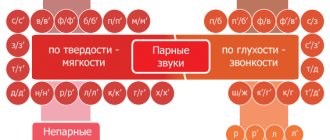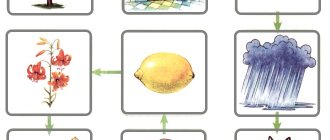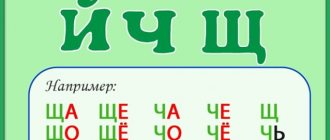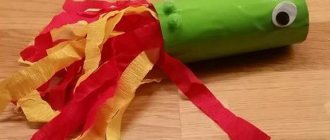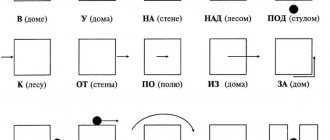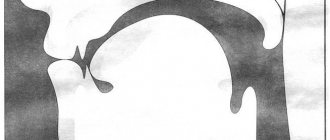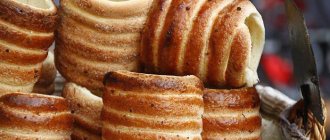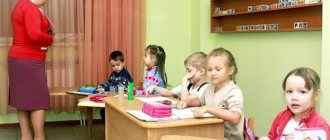How different are these consonant sounds?
There's a lot of trouble with letters, that's the kind of people they are.
Sounds change without asking and pretend to be different.
How much trouble these letters and sounds cause for children! Learn the letters, and then remember when and what sound they represent! And there are oh-oh-oh so many sounds. How can you remember all the voiced and voiceless consonants ?
Everything turns out to be very simple if you set up your child correctly.
I have already written about hard and soft consonant sounds. But consonants are not only hard and soft, but also voiced and unvoiced. And they cause so much trouble for children in the form of mistakes! How to teach a child to correctly identify voiced and voiceless consonants ?
Simply memorizing voiced and voiceless consonants is a losing proposition. Even if the child remembers, it will be very difficult for him to apply this knowledge. But if a child understands how voiced and unvoiced sounds are made, learns to hear them and identify them by their signs, then it will be easy for him to remember.
Let's first figure out the voiced and voiceless consonant sounds .
In the Russian language, consonant sounds are divided into voiced and voiceless, depending on the participation of the voice in the pronunciation of the sound. How to determine this? Say a single consonant sound and place your hand to your throat. If the vocal cords vibrate, it is a ringing sound. If not, then you are deaf. Check with your child and pronounce the sounds B - P, M or X. Did you notice?
Voicedness or deafness can be defined differently. Cover your ears with your palms and say a consonant sound. Did you hear a voice or noise? If a voice is heard, then the sound is ringing, if the noise is dull.
And this way you can easily and simply determine the voicedness or dullness of a consonant . At first, this method is very good. But if the child continues to determine the voicedness or deafness of a consonant in this way, then this will take a lot of time. The child will not have time to complete work in class. Therefore, it is necessary for the child to remember voiced and voiceless consonants.
And here we need to remember that the brain can perceive information in different ways - through hearing, vision or sensations. This means that in order for a child to remember information, it is necessary to influence all the child’s systems.
By determining the voicedness and deafness of consonants by ear, we have already included hearing in the work. By putting our hand to our throat, we connected the sensations. Now we need to connect our vision. To do this, you need to make a sign or drawing, where you denote the voiced and voiceless consonants with some symbols.
Voiced and voiceless consonants are paired and unpaired. This means that when creating such a diagram or tablet, you need to place paired consonants side by side. You can use any symbols that remind the child that the sound is voiced or unvoiced. So in this scheme, voiced consonants are indicated by a bell, and voiceless consonants are indicated by headphones.
Draw a similar sign with your child. Let him independently place the letters near the desired symbol, and you just control and guide the child’s actions. Remember that a person will only remember well what he did on his own.
Play with the placement of letters on floors or houses with the desired symbol several times and the child will perfectly remember the voiced and voiceless consonants. Hang this sign in a visible place and periodically return to it, ask the child to tell, show, name some sounds.
So, by playing, repeating already familiar properties of sounds and letters, you will help your child learn the basics of the Russian language without difficulty, remember voiced and voiceless consonants .
Have questions? Write in the comments to get an answer.
In the meantime, get some positivity and watch a wonderful cartoon. Let's learn from this cheerful monkey to find the good in everything.
Differentiation of paired voiced-voiceless consonants
Difficulties in differentiating phonemes that have acoustic-articulatory similarities in younger schoolchildren lead to confusion of letters in written speech. Confusion indicates that the writer identified a certain sound in the word, but chose the wrong letter to represent it. Based on acoustic-articulatory similarity, paired voiced-voiceless consonants are often mixed: b-p, v-f, d-t, z-s, g-k, sh-zh. The peculiarities of the pronunciation of the sounds of these pairs are in the same articulatory patterns.
In this case, voiced consonants are pronounced with greater participation of the voice than voiceless ones. In the flow of speech, especially when pronouncing words in a whisper, when students dictate to themselves, the differences between these sounds are “blurred.” The child is guided by articulation, and the insufficiency of phonemic representations and differentiations, characteristic of children with speech impairments, is decisive in the occurrence of this type of specific errors. Mixtures are observed in a clear position: “tender”, “kartovel”, “shuravel”, “rough”, “troubled”, “worked hard”. Errors are persistent.
In order for correctional work to be effective, it is necessary to comply with the following general didactic requirements and principles of correctional speech therapy: consistency, phased formation of mental actions, systematicity, reliance on different analyzers, and an integrated approach. Let's consider the system of correctional work using the example of paired consonants s-z:
1. We select sounds from words in the initial position using subject pictures.
2. We clarify the articulation and sound of the mixed sounds. At the same time, we rely on visual, auditory, and kinesthetic analyzers. We correlate sounds and letters using mnemonic techniques. This is especially important for first-graders, who experience instability in correlating phonemes with graphemes, and the connection between the meaning and visual image of a letter has not been strengthened. For example, the sound “Z” is the song of a mosquito. When pronouncing a sound, place your palm on your throat and feel the vibration of the vocal cords.
The sound “C” means the pump is running. Vibration of the vocal cords is almost not felt. The sound can be pronounced in a whisper.
To consolidate the visual image of the letter, you can use “The ABC of Merry Men” by A. Shibaev or the manual by E.V. Ostanina “I will remember the letters myself from pictures and poems”
3. Differentiate sounds and letters in syllables. Types of tasks:
- Read syllables according to syllable tables in pairs, selectively (only with the letter s, z)
| SA - FOR SO - ZO SU - ZU SY - ZY SI - ZI SE - ZE SIO - ZO XIA - ZYA | SLA - EVIL SLO - EVIL SLU - EVIL SLY - EVIL SLI - EVIL SLE - EVIL SLY - EVIL SLY - EVIL | SVA - CALL SVO - CALL SVU - CALL SVY - CALL SVI - CALL SVE - CALL SVE - CALL SVYA - CALL |
- Show (write) the first syllable in the words: teeth, soups, north, zebra, hare, sled, hear, evil, beets, stars, etc.
- Show (write down) the last syllable of the words: carry, carry, frost, scales, benefit, dew, etc.
- Show (write down) the second syllable of the words: they threw, cut, mowed, drove, called, sent, kid, donkey, etc.
- Come up with a word that begins with the given syllable.
4. Differentiate sounds in words. Types of tasks:
- Read and write the words, inserting the missing letters S, Z.
- Read and write down the words, adding the appropriate syllables: SA-ZA: va__, gla__, Li__, li__, mimo__, o__, flask__, miracle__, next__, gro__, pol__, polo__.
- Replace the underlined letter with S or Z, getting a new word:
house branch very T-shirt smooth bark washing desk labial Borka blouse to steal - Complete syllable patterns of words indicating the letters S, Z: drifts, sparkled, smeared, through, green, gold, pine, stepped, strawberry, etc.
- Distribute pictures (words) in two columns according to the presence of sounds S, Z.
- Puzzles. Write down the answers, make a syllable diagram or encrypt them, indicating the serial numbers of the letters S, Z
a) Not caring about the weather, she walks around in a white sundress, and on one of the warm days May gives her earrings (Birch) - Z5
b) Gold coins fall from a branch (Autumn Leaves) – C2 C3 Why then is he considered a bird? (Ostrich) – С1С6
c) Striped horses play hide and seek all day long. (Zebras) – Z1
- Working with pairs of words in which the sounds and letters S, Z are semantic distinguishers:
a) read, choose the corresponding picture for each word (rose-dew, goat-braid)
b) insert the letter in the context: prickly ro_a, cold ro_a; _pouring water, _pouring the dog.
c) Finish the sentence with a word from the pair: Mows the grass..., plucks the grass... (scythe, goat)
d) Make up a sentence with each word of the pair.
Webinars on tax planning using offshore companies wugroup.ru.
5. Differentiate sounds and letters in phrases and sentences.
- Insert the letters c, z into words, phrases, sentences (proverbs):
| Not the gold that bleeds. | Take little for every task. |
- Make up phrases:
- Make up phrases using words from brackets:
| a) blue..., blue..., blue... | (sky, umbrella, bag) |
| b) winter..., winter..., winter... | (forest, coat, clothes) |
- Insert letters into phrases. In which words do the consonants require checking?
| a) interesting | _ka_ka | b) _ close | eyes_ki |
| _ Elenaya | kra_ka | _ no | ma_ku |
| ru _ _ kaya | take_ka | ve_ti | Kolya_ku |
- Insert the missing words into the sentences - the names of the pictures:
The children made... The older sister went to... On... Zoya forgot her scarf.
- Find errors in the sentences:
On the branches of a birch tree we noticed a nest of bullfinches. The dragonfly daisy has golden eyes.
- Make sentences from the words:
a) Sonya knows a lot of fairy tales, interesting ones; b) feeders, children, hang, trees, on;
6. Differentiate sounds and letters in texts.
- Write down the text, inserting the missing words with the letters S, Z into the sentences.
It's cold... Snow covered the ground white... (what?). Aspen and (what?) ... put on ... (what?) fur coats. Tall... (what?) grew at the porch. Snow... (what does it do?) in the sun with bright sparkles. Frost (what did?) glass... (what?) patterns. The kids are running... (with what?) up the hill.
Words for reference: tablecloth, birch trees, snowdrifts, sleds, snowy, high, shines, sparkles, sparkles, painted, decorated, fabulous, intricate.
- Statement of issues and plan.
1 CLASS
Tuzik. Vasya has a dog Tuzik. Tuzik is sitting by the fence. Vasya gives him bones. Tuzik is gnawing on bones.
| 1) What is the name of Vasya’s dog? 2) Where does Tuzik sit? | 3) What does Vasya give him? 4) What is Tuzik doing? |
Birch. There is a tall birch tree in the garden. There is a finch's nest on a birch tree. He carried leaves into the nest. The finch sings loudly.
| 1) What kind of birch tree is in the garden? 2) Whose nest is on the birch tree? | 3) What did the finch carry into the nest? 4) How does a finch sing? |
2nd CLASS
Brave Drozd. The cat Vaska strayed from the house. He began to look for his own food. Once the cat noticed a thrush's nest. Vaska’s eyes sparkled. He climbed right up to the hollow and put his paw in. Drozd rushed at Vaska. He began to peck him on the nose and eyes. The cat got scared and started running.
| 1) Who strayed from the house? 2) How did the cat feed? 3) What did Vaska notice? 4) How did he behave? | 5) What did the blackbird do? 6) How did the thrush defend the nest? 7) What did the cat do? |
Gourmand. The Marquise cat was very strange. She loved sweet honey. Once the Marquise was basking in the sun. Then she smelled a familiar smell. The cat opened her green eyes and moved towards her cherished goal. In front of the hive, Marquise stood on her hind legs. She stuck her sweet little face into the hive. And suddenly there was a loud cat squeal. The marquise rushed into the bushes.
Plan. 1. Strange cat. 2. Familiar smell. 3. Left without honey.
Author of the material: Tsarevskaya Elena Gennadievna
Also on topic:
Presentation “Differentiation of paired consonants in words”
Consonants
Consonant sounds form a voice and noise that occurs as a result of an air stream overcoming obstacles in the oral cavity (teeth, closing and opening of lips, etc.).
Voiceless consonants
With the help of noise, voiceless consonants, soft and hard, are formed:
[p] - [p'], [k] -[k'], [f]-[f'], [t]-[t'], [s]-[s'], [x]-[ x'], [h'], [w], [w',] [ts].
Voiced consonants
in the formation of voiced
Voiced consonants have pairs based on hardness/softness:
[b]-[b'], [c]-[c'], [g]-[g'], [d]-[d'], [z]-[z'], [l]-[ l'], [m]-[m'], [n]-[n'], [p]-[p'], as well as [th'], [zh], [zh'].
The long soft sound [zh'] occurs in a small number of words:
yeast, reins, ride, squeal, grumble, etc.
How to explain hard and soft consonants to a child
The task is not easy. If your child knows letters, start with a simple story about how vowels surrounded consonants and began to command them. Yes Yes. In war it’s like in war. These sassy vowels decide whether the consonant sound will be hard or soft.
There are a couple of rebels to whom this rule does not apply.
Ts, Zh, Sh are only hard, and Ch, Shch and Y are soft under any circumstances. We add rebels to the “black” list and place it on the most popular place in the house, for example, on the refrigerator, so that their glorious names are etched in the child’s memory. Don’t forget about the soft sign, which, by its appearance, easily decides the fate of hard and soft consonants.
The rest are less fortunate: if after the consonant there is A, O, U, E or Y, the sound is hard and is indicated by a blue brick or circle; if behind the “captive” there is E, E, Ya, Yu or I, it is soft and is indicated by green.
Did your efforts not bring the expected results? Draw attention to the position of the tongue when pronouncing paired hard and soft consonants.
Offer to turn a hard sound into a soft one, using different vowels: pa - pya, sa - sya, pu - pyu, su - syu, etc. A similar game can be complicated by changing the words: “corner - coal”, “rad - row”, bow - hatch" and others.
If after a consonant there is its equally consonant brother, the sound is hard. For example, in the word “candy” there is an “f” after the “n”. We can confidently say that in this case “n” is hard.
By developing the ability to distinguish between hard and soft consonants, you help the child develop auditory attention and phonemic awareness, which is important when teaching a child to read and write. This way you lay the foundation for success in school.
Video lesson “Consonant sounds and their letters”
We strengthen the ability to distinguish between vowels and consonants sounds and letters
Once you have explained the difference between vowel and consonant sounds and letters, be sure to reinforce the skill you have developed. And play again.
- On the way from kindergarten, together with your child, come up with words that begin with a given sound.
- Draw a sheet of paper into squares, color them red and blue, and ask them to arrange the letters from the cut alphabet into “houses.”
- * Game “Attentive Ears”. The instructions are simple: “If a word begins with a vowel, clap, if a word begins with a consonant, stamp.”
- Come up with a recipe for an unusual dish, the ingredients in which begin only with certain sounds.
- When cleaning the apartment, give the task to first remove all toys that begin with consonants.
Important condition! Systematicity and calmness.
Your positive attitude will not only teach you to distinguish between vowels and consonants, sounds and letters, but also create a desire to learn.
